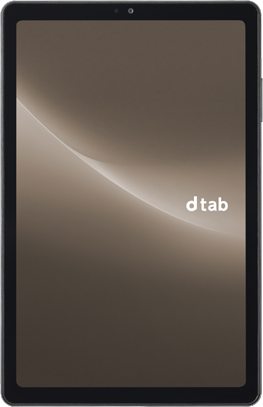

PlatformThe family of the operating system like Android, iOS, Windows Phone/Mobile, Palm OS, etc. Android
Operating SystemPre-installed (usually embedded) operating system which the device was released with. Google Android 12 (S)Google Android 12 (S)
Software ExtrasNavigation software, voice recognition, face recognition, personal assistant app, etc. Voice Command , Navigation softwarepre-installed , Intelligent personal assistantLearning personal assistant based on artificial intelligence (AI) , Face RecognitionFace identification by built-in camera
Application processor, ChipsetApplication processor, Chipset:
CPU ClockFrequency of the square signal which schedules the internal operation of microprocessor (synchronous sequential logic). The current consumed by the processor is approximately proportional to clock rate. 2200 MHz
CPUManufacturer part number and most important characteristics of the IC which includes the main application processor or processors Qualcomm Snapdragon 695 5G SM6375, 2021, 64 bit, octa-core, 6 nm, Qualcomm Adreno 619 GPUQualcomm Snapdragon 695 5G SM6375, 2021, 64 bit, octa-core, 6 nm, Qualcomm Adreno 619 GPU
Operative MemoryOperative Memory:
RAM TypeType of volatile memory IC which specifies RAM architecture, timing characteristics, refresh mode, voltage levels and physical design of the IC. Two major types of random-access memory is static RAM (SRAM) periodically refreshed dynamic RAM (DRAM). LPDDR4x SDRAM
2133 MHzClock frequency of the RAM databus (not necessarily equivalent to data transfer frequency). The width of the databus (e.g. 64 bit), RAM type (e.g. DDR SDRAM), number of channels and clock rate (e.g. 200 MHz) determines peak transfer rate
RAM Capacity (converted)RAM capacity in binary bytes (KiB: 1024 bytes, MiB: 1024 KiB, GiB: 1024 MiB) 4 GiB RAM
Non-volatile MemoryNon-volatile Memory:
Non-volatile Memory InterfaceInterface (e.g. UFS 2.0, eMMC 5.1, moviNAND) which determines physical layer (width, clock rate, lanes, protocol) of data transfer between the application processor and the NV memory Yes
Non-volatile Memory Capacity (converted)The value of ROM capacity converted to the most appropriate units (KiB: 1024 bytes, KB: 1000 bytes, MiB: 1024 KiB, MB: 1000 KB, GiB: 1024 MiB, GB: 1000 MB) 64 GB ROM
DisplayDisplayAll parameters that related to display
Display DiagonalThe distance measured between the furthest corners of the display. In case of display with rounded edges this refers to the diagonal of the smallest bounding rectangle. 213 mm
8.4 inchDisplay Diagonal in inches
ResolutionHorizontal and vertical resolution of the primary display. In case of display with rounded edges this refers to the smallest bounding rectangle. 1200x1920
Horizontal Full Bezel WidthDefined as the sum of width of left and right vertical display bezels. If the display panel is located in the middle width of left and right bezels are the same and their width is the half of the full bezel width. 16.11 mm
Display Area UtilizationRegular display area per regular front panel area ratio. This approximated indicator does not count with possible rounded corners (neither on front panel nor on display) or display notches, holes. 78.6%
Pixel DensityIndicates the number of pixels per inch 270 PPI
Display TypeDisplay technology, e.g. Color/ monochrome e-ink, STN, PM-OLED, AM-OLED, TN-TFT, IPS TFT, ASV TFT, MVA TFT, PVA TFT, PLS TFT Color IPS TFT LCDColor IPS-TFT (In-Plane Switching - Thin Film Transistor) is also called Super TFT LCD. This is an active matrix LCD technology developed by Hitachi Ltd. in 1996. display
Number of Display ScalesMaximal number of displayable colors or scales 16.8M
Scratch Resistant ScreenUsual types: Gorilla Glass generations, DragonTrail/X, Sapphire Glass Yes
Collapse datasheetExpand datasheet
Graphical SubsystemGraphical Subsystem:
Graphical ControllerManufacturer and part number of the graphics controller IC or commercial name of the intellectual property (IP) if the graphics controller is the part of a chipset Qualcomm Adreno 619
GPU Clock: 840 MHz
Audio/Video InterfacesAudio/Video Interfaces:
A/V OutAudio/Video outputs form a heterogeneous group of interfaces that allow the user to connect the device to various external analog/digital multimedia devices (monitors, projectors, HD TVs) and play multimedia content. For example: MHL, DisplayPort, HDMI, e No
Audio SubsystemAudio Subsystem:
Microphone(s)Analog or digital sound receiver. Main applications: voice calls, active noise cancellation, voice command, voice/video recording, voice identification mono
Loudspeaker(s): Yes
Audio Output: Yes
Cellular PhoneCellular Phone:
Supported Cellular BandsList of supported cellular networks with band names. For example GSM900 refers to the GSM system with the 890-915 MHz uplink and 935-960 downlink bands. UMTS2100 (B1)UMTS2100 phones support UMTS 1900 / 2100MHz (IMT, also refferred as UMTS Band I) band (downlink: 2112.4 - 2167.6 MHz, uplink: 1922.4-1977.6 MHz) , UMTS850 (B5)UMTS850 phones support UMTS 850 MHz (CLR, also refferred as UMTS Band V) band (downlink: 871.4 - 891.6 MHz, uplink: 826.4 - 846.6 MHz) , LTE2100 (B1)LTE2100 phones support LTE 1900 / 2100MHz (IMT, also refferred as LTE Band 1) band (downlink: 2110 - 2170 MHz, uplink: 1920 - 1980 MHz) , LTE1800 (B3)LTE1800 phones support LTE 1800 MHz (LTE Band 3) band (downlink: 1805 - 1880 MHz, uplink: 1710 - 1785 MHz) , LTE850 (B5)LTE850 phones support LTE 850 MHz (LTE Band 5) band (downlink: 869 - 894 MHz, uplink: 824 - 849 MHz) , LTE800 (B19)LTE800 phones support LTE 800 MHz (LTE Band 19) band (downlink: 875 - 890 MHz, uplink: 830 - 845 MHz) , LTE1500 (B21)LTE1500 phones support LTE 1500 MHz (LTE Band 21) band (downlink: 1495.5 - 1510.9 MHz, uplink: 1447.9 - 1462.9 MHz) , TD-LTE2600 (B38)TD-LTE 2600 MHz phones support TD-LTE 2600 MHz (LTE Band 38) band (2570 - 2620 MHz) , TD-LTE1900 (B39)TD-LTE 1900 MHz phones support Chinese TD-LTE 1900 MHz (LTE Band 39) band (1880 - 1920 MHz) , TD-LTE2500 (B41)TD-LTE 2500 MHz phones support TD-LTE 2500 MHz (LTE Band 41) band (2496 - 2690 MHz) , NR700 (N28)5G APT700 phones support 700 MHz APT band (downlink: 758 - 803 MHz, uplink: 703 - 748 MHz) , TD-NR3500 (N78)5G NR TDD 3500 MHz phones support 3500 MHz TDD C-Band (N78) band (3300 - 3800 MHz) , TD-NR4700 (N79)5G NR TDD 4700 MHz phones support 4700 MHz TDD C-Band (N79) band (4400 - 5000 MHz) bands
Supported Cellular Data LinksList of supported cellular data links and rates. UMTSUniversal Mobile Telecommunications System. UMTS Release '99 data link layer, W-CDMA grants up to 384 kbit/s pocket-switched download speed. , HSUPAHigh-Speed Uplink Packet Access is a 3.5G UMTS uplink protocol. , HSUPA 5.8 , HSDPAHigh-Speed Downlink Packet Access is a 3.5G UMTS downlink protocol. , HSPA+ 21.1 , DC-HSDPA 42.2Dual-carrier HSPA+ 42.2 Mbps , LTELTE (Long Term Evolution) or the E-UTRAN (Evolved Universal Terrestrial Access Network), introduced in 3GPP R8, is the 4G access part of the Evolved Packet System (EPS). , LTE 100/50LTE 100.8 Mbps / 50.4 Mbps (Cat. 3) , LTE 150/50LTE 151.2 Mbps / 50.4 Mbps (Cat. 4) , LTE 225/50SK Telecom LTE-A , LTE 300/50More exact values: LTE 301.5 Mbps / 50.4 Mbps (Cat. 6) , LTE 300/75LTE 299.6 Mbps / 75.6 Mbps (Cat. 5) , LTE 450/50LTE Category 9: 452.2 Mbps downlink, 51 Mbps uplink , NR 15005G NR approx. 1.5 Gbps downlink (FR1) , NR 26005G NR approx. 2.6 Gbps downlink (FR1, Sub6) data links
SIM Card SlotSupported Subscriber Identification Card (SIM) Format like mini-SIM, micro-SIM, nano-SIM, embedded SIM, etc. e-SIM
Complementary Phone ServicesPossible extras: voice transmission, voice speaker, vibration, speakerphone, active noise cancellation, PTT, HD Voice, VoLTE, etc. Voice transmissionDevice is able to receive and transmit voice over cellular network , Voice speakerDedicated voice speaker is located near to the ear when talking and optimized for the spectrum and peak-to-peak range of the human voice. , Vibrate , Speakerphone , ANCActive noise cancellation (ANC) , HD Voice , VoLTE
Secondary Cellular PhoneSecondary Cellular Phone:
Sec. Supported Cellular Networks: No
Control PeripheralsControl Peripherals:
Touchscreen TypeDetermines how the touchscreen module senses the touch of the screen Capacitive multi-touch screen
Communication InterfacesCommunication Interfaces:
Expansion InterfacesNon-volatile memory and/or I/O expansion interfaces. For example: microSD, microSDXC, SDHC, CF II., PCMCIA III., etc. TransFlash , microSDSupports memory cards with capacity of up to 2GB and may comply with some (not HC) memory cards with higher capacity than 2GB , microSDHCA micro-SDHC-capable device supports High Capacity (SD 2.0/HC) memory cards with capacity of up to 32GB. , microSDXCA microSDXC-capable device supports eXtended-Capacity memory cards with capacity of up to 128 GB, 256 GB or 2 TB.
USBFirst or the only USB port. USB is a common high-speed serial bus standard that allows data and power transfer between the mobile device and another computer. Version of USB identifies USB standard. USB 2.0Released in April 2000, USB 2.0 specification introduced USB Hi-Speed enabling devices to communicate at 480 Mbit/s data rate.
USB HS (480 Mbps)Determines the highest available data transfer speed of first USB port. Usual standard speed levels: High-Speed (HS), Super-Speed (SS)
USB ServicesPossible services: USB power supply, USB charging, USB fast charging, USB host, OTG, etc. USB chargingThe device is able to charge its battery supplied from the USB port. , USB fast chargingFast charging is supported , USB HostUSB host devices are capable of controlling USB client devices, like mass storage devices, mouse, keyboard, camera, printer, scanner, etc. , USB OTG 1.3 , USB PDDevice which meets USB Battery Charging Specification Revision 1.1 / 1.2 is able to supply current from 500 mA to 1.5 A for the client device at 5V. , USB PD 2.0Device which meets USB Power Delivery 2.0 is able to supply current from 3 A to 5 A for the client device at 20V.
USB ConnectorPhysical USB connector layout. Most common types: micro-USB, USB A, USB Type-C or proprietary (e.g. Lightning) USB C reversible
BluetoothIEEE 802.15 is a short-range radio technology standard that allows transfer of data, and the use of accessories such as wireless audio devices and printers. This field specifies the supported BT version. Bluetooth 5.1Released in Jan, 2019
Wireless LANWireless LAN / WLAN / Wi-Fi: 802.11 defines a medium-range wireless data link that allows for internet access and data transfer. This field enumerates the supported protocols (e.g. 802.11a/b/g/n). 802.11aShort range standard, 5 GHz, max. 54 Mbit/s , 802.11b2.4 GHz (ISM band), max. 11 Mbit/s , 802.11g2.4 GHz (ISM band), max. 54 Mbit/s , 802.11n2.4 GHz (ISM band) or optional 5 GHz support, max. 600 Mbit/s thanks to MIMO antennas , 802.11ac2.4 GHz (ISM band) or optional 5 GHz support (4915...5825 MHz), max. 1300 Mbit/s thanks to MIMO antennas
Wireless ServicesPossible extras: Miracast, DLNA, WiFi Tethering, UPnP, WiFi Display, AirPlay, etc. Wi-Fi Direct , Wi-Fi TetheringWi-Fi Mobile Hotsport
Address: 2457 W. Devon Ave. Chicago, IL 60659, USA
Email: labbek@aol.com
Phone: 1.773.274.3764


